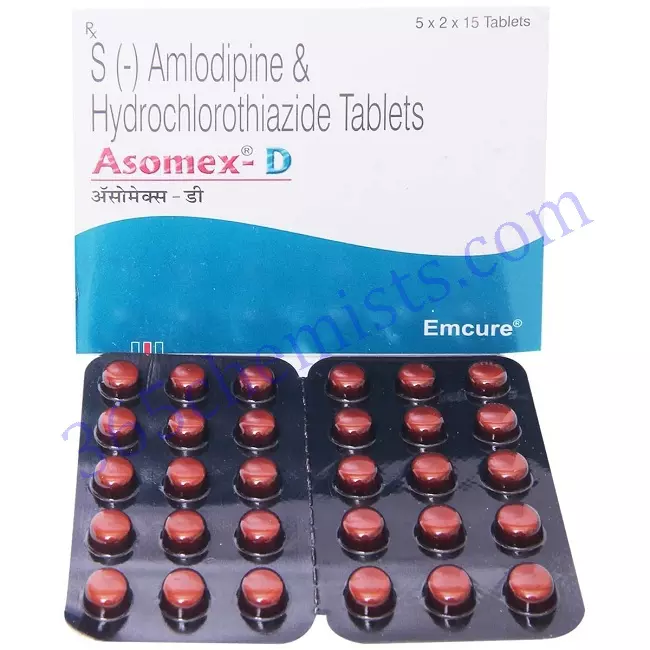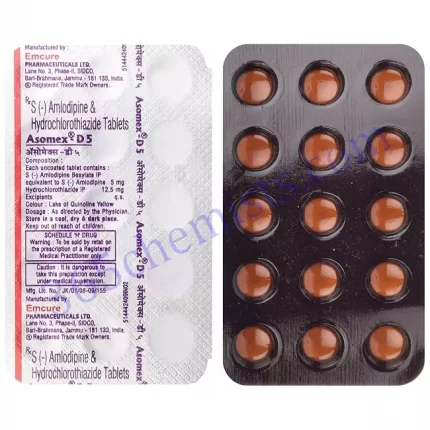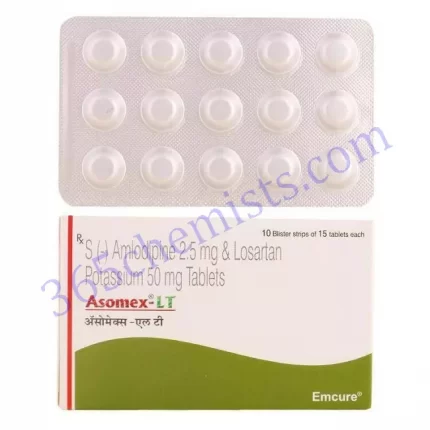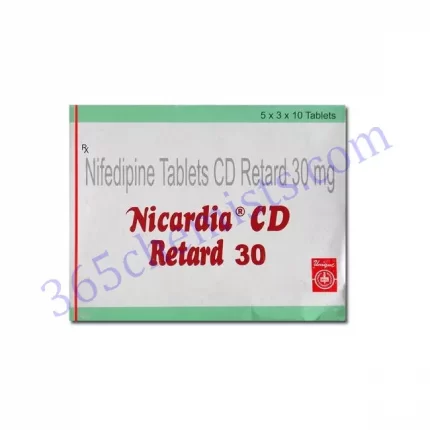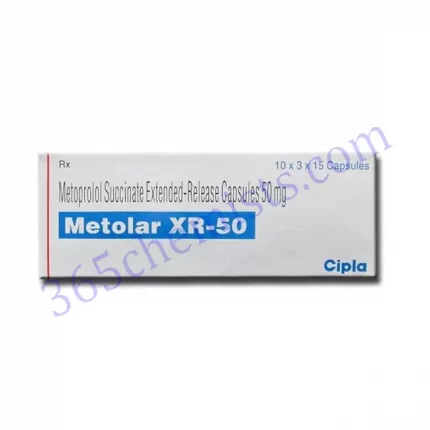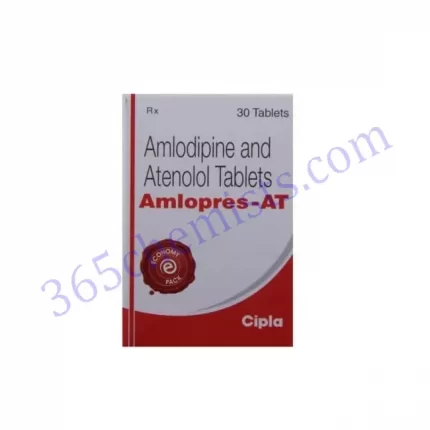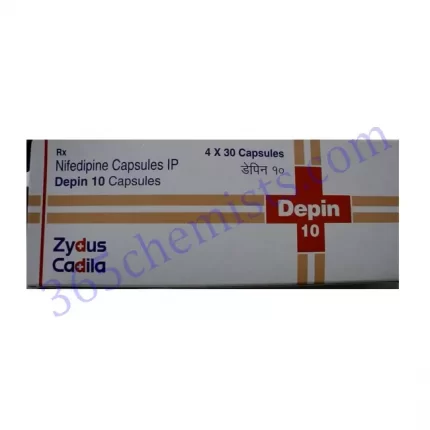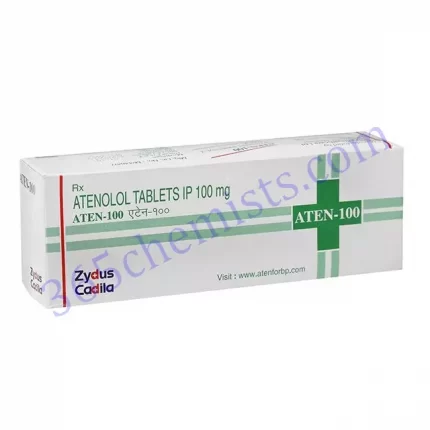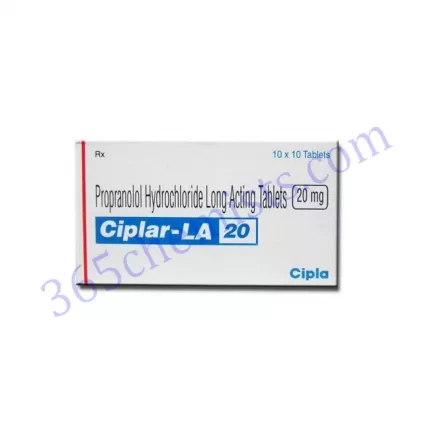Asomex-D Tablet (Amlodipine 2.5mg/Hydrochlorothiazide 12.5mg): A Combined Approach for Hypertension Management
A substantial portion of people all over the world are living with the medical disease known as hypertension, which is more generally referred to as high blood pressure. It is distinguished by consistently high blood pressure levels and is linked to an increased probability of cardiovascular problems. It is possible to properly manage hypertension using a number of medications, one of which is the Asomex-D Tablet, which is a medication that is frequently administered. The purpose of this article is to provide a detailed description of the Asomex-D Tablet, including its make-up, the mechanism of action underlying its therapeutic applications, and the possible adverse effects associated with its use.
Composition
Amlodipine and hydrochlorothiazide are the two active components that are included in one dose of the combination drug known as Asomex-D Tablet. Each tablet contains 12.5 milligrammes of hydrochlorothiazide in addition to the 2.5 milligrammes of amlodipine. Both amlodipine and hydrochlorothiazide are classified as calcium channel blockers (CCBs), however hydrochlorothiazide is also known as a thiazide diuretic. These two medications have a complementary impact on one another, which results in more effective regulation of blood pressure.
Mechanism of Action
Amlodipine, the active ingredient in Asomex-D Tablet, exerts its effect by preventing calcium ions from entering the smooth muscle cells of blood arteries. This results in the blood vessels being able to relax and become more expansive, which in turn leads to a reduction in the peripheral vascular resistance and blood pressure. On the other hand, hydrochlorothiazide is effective because it causes an increase in the amount of salt and water that is excreted by the kidneys. This lowers the volume of fluid that is contained within the blood vessels, which contributes further to the reduction in blood pressure.
Related Product
Asomex 5 Tablet
Asomex AT 5 Tablet
Asomex D 2.5 Tablet
Asomex D 5 Tablet
Asomex LT Tablet
Asomex M 5 Tablet
Asomex M Tablet
Asomex TM 2.5 Tablet
Asomex TM 5 Tablet
Benefits of Asomex-D Tablet
- complete Blood Pressure Control The Asomex-D Tablet combines the benefits of Amlodipine and Hydrochlorothiazide to give complete blood pressure control. This is accomplished by the combination of these two medications. Amlodipine relaxes and expands the blood vessels, which lowers the resistance of the peripheral vascular system. Hydrochlorothiazide, on the other hand, encourages diuresis, which brings to a reduction in fluid volume. The efficient lowering of blood pressure is guaranteed by this mechanism’s twin actions.
- Convenient Combination Medication: The Asomex-D Tablet offers the ease of combining two active components in a single tablet, making it an ideal choice for patients who prefer to take their medication in a single dose. People who have hypertension no longer have to take various drugs, which streamlines their treatment plan and makes it easier to manage their condition. It improves patients’ ability to take their medications as prescribed and makes it simpler for them to exercise proper control over their blood pressure.
- Individualised Dosage Alterations The recommended daily intake of Asomex-D Tablet can be modified to better meet the requirements of each individual patient. The dosage can be adjusted by medical professionals according to the severity of the patient’s hypertension, the individual’s response to the medicine, and the patient’s tolerance to it. This individualised method ensures the best possible regulation of blood pressure while reducing the risk of adverse consequences.
- The Asomex-D Tablet aids in reducing complications linked with hypertension by efficiently regulating the patient’s blood pressure, which is one of the risk factors for these complications. These include difficulties with the kidneys, heart attacks, and strokes, in addition to damage to the blood vessels. Utilisation of this drug on a consistent basis, as directed by a qualified medical practitioner, results in a marked reduction in the probability of developing these issues.
- Hydrochlorothiazide, which is one of the active chemicals in Asomex-D Tablet, functions as a diuretic. This results in an additional diuretic effect. It does this by stimulating the kidneys to excrete more salt and water, which in turn lowers the total amount of fluid in the body. This diuretic effect aids in minimising fluid retention, which can be especially advantageous for people who have other fluid-related issues in addition to hypertension.
- Acceptable to Most People and Relatively Risk-Free: The Asomex-D Tablet is well tolerated by most people, and the majority of adverse effects are considered to be mild and only brief. Dizziness, headaches, increased urination, and gastrointestinal disturbances are examples of common side effects that typically only last for a short period of time and go away on their own. Even though serious adverse effects are uncommon, they should be reported as soon as possible to a medical expert.
Therapeutic Uses
The most common indication for the use of the Asomex-D Tablet is in the management of hypertension. It does this by successfully lowering blood pressure, which assists in preventing the complications that are connected with high blood pressure, like as heart attacks, strokes, and kidney difficulties. This combo drug is very helpful for those who need calcium channel blockers as well as diuretics in order to get the optimal level of control over their blood pressure. On the other hand, the exact therapeutic use should be determined by a healthcare practitioner based on the medical state of the individual.
Dosage and Administration
It is possible for the recommended dosage of Asomex-D Tablet to change based on the severity of the patient’s hypertension as well as other unique patient characteristics. It is essential to take the medication exactly as directed by the healthcare expert, including adhering to the dosage and administration instructions that have been prescribed. The initial dose that is typically prescribed is one pill each day, and it is best to take the medication at the same time each day. Depending on how the patient reacts to the drug and how well they tolerate it, it’s possible that the dosage will need to be adjusted. In order to achieve the best possible control of blood pressure, it is vital to do routine monitoring of blood pressure and to schedule periodic follow-up appointments with a healthcare practitioner.
Precautions and Potential Side Effects
Before beginning therapy with Asomex-D Tablet, it is essential to communicate any preexisting medical problems, allergies, or drugs that are currently being taken to the attending medical practitioner. If you have a history of allergic responses to medications that are similar to this one, certain kidney or liver issues, cardiac conditions, or a history of taking other medications that cause allergic reactions, you should not take this medication. Dizziness, headache, increased urination, electrolyte imbalance, and gastrointestinal problems are some of the potential adverse reactions that may occur after taking an Asomex-D Tablet. These adverse effects are often modest and fleeting in nature. Nevertheless, it is essential to seek medical assistance in the event that any side effects that are uncommon or chronic are noticed.
Conclusion
The combination of amlodipine and hydrochlorothiazide that is found in the Asomex-D Tablet makes it possible to take a comprehensive approach to the management of hypertension. Its dual-action mechanism, which combines a calcium channel blocker and a diuretic, helps in efficiently lowering blood pressure and minimising the risk of cardiovascular problems. This mechanism also contributes to the fact that its blood pressure-lowering effects are more long-lasting. It is convenient because it is a combination medication, and it also enables individualised modifications to the prescribed amount. Asomex-D Tablet assists patients in maintaining optimal blood pressure control and improving their overall cardiovascular health when used in conjunction with the routine monitoring and direction provided by healthcare professionals.

